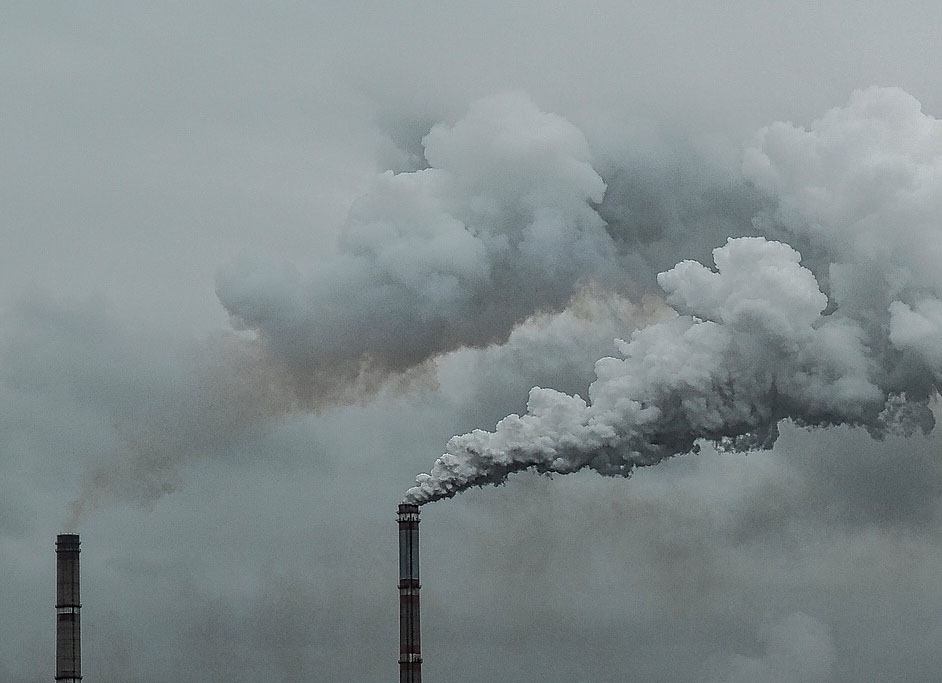
Carbon dioxide emissions from human activities are driving global warming. They are also a major contributor to air pollution. Moreover, CO2 levels may indicate high levels of other harmful air pollutants. Furthermore, CO2 emissions may impact human health by displacing oxygen in the atmosphere.
To reduce CO2 emissions is a key measure to control climate warming and mitigate air pollution. Two months ago (October 8, 2018), the Intergovernmental Panel on Climate Change (IPCC) released a special report limiting global warming to 1.5 degrees Celsius above pre-industrial levels. By 2017, however, human-induced global warming has reached approximately 1°C above pre-industrial levels, with a rate of increase at 0.2°C per decade.
To reduce CO2 emissions is imperative worldwide. Therefore, it is important to examine the extent of CO2 emissions in different areas over the world. On 5 December 2018, a report, released by the Global Carbon Project at the UN climate summit in Poland, projected that global CO2 emissions would jump to a record high in 2018. Over the past 150 years, cumulative CO2 emissions in the atmosphere have increased by 40%, primarily through the combustion of fossil fuels.
The Global Carbon Project has examined fossil carbon emissions in 213 nations or territories between 1959 and 2017. Based on the latest database released by the Global Carbon Project, it is feasible for us to take a look at current global rankings to see how different countries stack up when it comes to fossil CO2 emissions.
- Top 10 countries with the world’s largest volume of fossil CO2 emissions
The following is a list of top 10 countries ranked by their fossil CO2 emissions in total in 2017, calculated using the latest database released by Global Carbon Project on 5 December 2018. For each country, the estimates of fossil CO2 emissions per capital and fossil CO2 emissions per square kilometer are also presented.
| Nation or Territory | Total CO2 emissions (million tonnes of CO2) | CO2 emissions per capital (tonnes of CO2) | CO2 emissions per km2 (tonnes of CO2) |
| 1. China | 9838.8 (27.2%) | 6.98 | 1025.2 |
| 2. USA | 5269.5 (14.6%) | 16.24 | 547.1 |
| 3. India | 2466.8 (6.82%) | 1.84 | 750.3 |
| 4. Russian Federation | 1692.8 (4.68%) | 11.76 | 99.1 |
| 5. Japan | 1205.1 (3.33%) | 9.45 | 3189.4 |
| 6. Germany | 799.4 (2.21%) | 9.73 | 2239.0 |
| 7. Iran | 672.3 (1.86%) | 8.28 | 408.0 |
| 8. Saudi Arabia | 635.0 (1.76%) | 19.28 | 323.9 |
| 9. South Korea | 616.1 (1.70%) | 12.08 | 6256.1 |
| 10. Canada | 572.8 (1.58%) | 15.64 | 57.4 |
| The Whole World | 36153.3 | 4.79 | 242.7 |
As shown, China tops the list of countries with the highest volume of fossil CO2 emissions. Because of its large population size, its value of fossil CO2 emissions per capital (6.98 tonnes per capita) is at middle level. The amount of fossil CO2 emissions per square kilomter in China is lower than that in Japan, Germany and South Korea. If adjusting for the areas (e.g., desserts) where living conditions are hostile for human life, the amount of fossil CO2 emissions per square kilometer in China can be much higher.
India is also a country with horrendous air pollution, just second to China. In terms of the total amount of fossil CO2 emissions per year, India ranks 3rd on the list of countries. Although the amount of fossil CO2 emissions per capital in India (1.84 tonnes per capita) is much lower than the global-average level (4.79 tonnes per capita), The amount of fossil CO2 emissions per square kilometer (750 tonnes per km2) is much higher than the figure for USA (547 tonnes per km2).
USA ranks 2nd on annual CO2 emissions. The amount of fossil CO2 emissions per capital in USA is the highest in industrialized countries.
South Korea ranks 9th on the list. However, its amount of fossil CO2 emissions per square kilometer (6256.1 tonnes) is 2 times more than that in Japan, and 11 times more than that in USA.
- Top 10 countries with the largest volume of fossil CO2 emissions per capita
The following is a list of major countries or territories ranked by their fossil CO2 emissions per capita in the year of 2017 (in tonnes of CO2). Those nations or territories with a total of less than 10 million tonnes of CO2 emissions are not included.
| Nation or Territory | CO2 emissions per capita (tonnes of CO2) | Total CO2 emissions (million tonnes of CO2) |
| 1. Qatar | 49.18 | 129.8 |
| 2. Trinidad and Tobago | 29.72 | 40.7 |
| 3. Kuwait | 25.24 | 104.4 |
| 4. United Arab Emirates | 24.66 | 231.8 |
| 5. Brunei Darussalam | 23.86 | 10.2 |
| 6. Bahrain | 23.08 | 34.5 |
| 7. Saudi Arabia | 19.28 | 635.0 |
| 8. Australia | 16.90 | 413.1 |
| 9. USA | 16.24 | 5269.5 |
| 10. Kazakhstan | 16.07 | 292.6 |
| The Whole World | 4.79 | 36153.3 |
Most of the countries on this list are those located in the Middle East, including Qatar, United Arab Emirates, Bahrain, Kuwait, and Saudi Arabia, where the energy sector is a major source of the country’s GDP. This list highlights the importance of tackling air pollution problem in the Middle East.
For detailed information, please read the post: The List of Countries Ranked by Fossil CO2 Emissions Per Capita.
- Top 10 countries or areas with the highest CO2 emissions per square kilometer
Looking at a country’s total CO2 emissions and its CO2 emissions per capita doesn’t tell the full story of a country’s contribution to global warming or air pollution and the harmful risk to local people. An additional useful measurement is CO2 emissions per square mile or per square kilometer.
The following is a list of major countries or territories ranked by their fossil CO2 emissions per square kilometer in the year of 2017 (in tonnes of CO2).
| Nation or Territory | CO2 emissions per km2 (tonnes of CO2) | Total CO2 emissions (million tonnes of CO2) |
| 1. Singapore | 89764.5 | 64.8 |
| 2. Bahrain | 44689.6 | 34.5 |
| 3. Hong Kong | 38978.8 | 43.0 |
| 4. Qatar | 11180.3 | 129.8 |
| 5. Trinidad and Tobago | 7933.2 | 40.7 |
| 6. Taiwan | 7502.1 | 271.5 |
| 7. South Korea | 6148.1 | 616.1 |
| 8. Kuwait | 5858.2 | 104.4 |
| 9. Netherlands | 3859.2 | 164.0 |
| 10. Belgium | 3279.5 | 100.1 |
| The Whole World | 242.7 | 36153.3 |
As shown on the table, Singapore tops the list of nations with the largest amount of CO2 emissions per square kilometer, with a value of 89765 tonnes in 2017, 370 times more than the global-average value (242.7 tonnes per square kilometer).
Hong Kong ranks 3rd on the list, with a value of 38980 tonnes of fossil CO2 emissions per square kilometer, 160 times more than the global-average value.
Of the 10 nations or areas, four are located in Asia, including Singapore, Hong Kong, Taiwan, and South Korea; three in the Middle East (Bahrain, Qatar, and Kuwait), two (Netherlands and Belgium) in Europe, and one in Middle America (Trinidad and Tobago).
For further information, please read the post: The List of Major Countries Ranked by Fossil CO2 Emissions Per Square Kilometer.



Leave a Reply